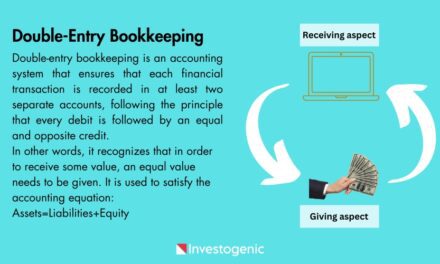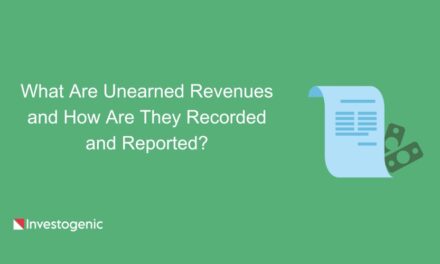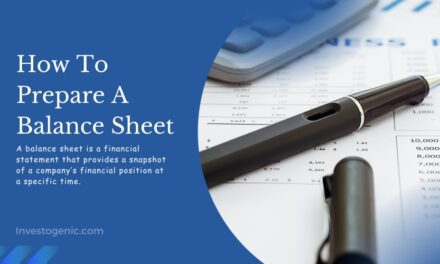
How to Prepare a Cash Flow Statement

Preparing a cash flow statement involves summarizing the inflows and outflows of cash within a specific period, usually a fiscal year. The cash flow statement shows a company’s financial health and ability to generate and manage cash.
What is a cash flow statement?
The cash flow statement is a financial statement that summarizes the movement of cash and cash equivalents (cash equivalents include bank accounts and marketable securities) that come into and go out of a business. Meaning it shows how well a business is managing its cash position, which means how well the business is generating cash to pay off its debt obligations and meet its operating expenses.
There are two main methods of preparing a cash flow statement:
- Direct method
- Indirect method
The indirect method is more commonly used because it starts with net income and adjusts for changes in non-cash items and working capital. Here’s a step-by-step guide to preparing a cash flow statement using the indirect method:
Step 1: Understanding the Format of the Cash Flow Statement
In my opinion, before knowing how to prepare a cash flow statement, we need to understand the format of a cash flow statement. This gives us a quick idea of what information we will need to prepare the cash flow statement and how a cash flow statement works.
The format of the cash flow statement is divided into three sections. These sections of the cash flow statement describe the life cycle of cash and cash equivalents in the business. We will understand this in detail.
- Cash flow from operating activities
- Cash flow from investing activities
- Cash flow from financing activities

Cash flow from operating activities
Cash flows from operating activities is a section in the cash flow statement that represents the cash inflows and outflows generated by a company’s core business operations. This section provides insights into how effectively a company is generating cash from its day-to-day activities, excluding investing and financing activities. It’s a key indicator of a company’s operational liquidity and financial health.
Cash flow from investing activities
Cash flows from investing activities is a section in the cash flow statement that records cash inflows and outflows associated with business investing activities. These activities include the acquisition and disposal of long-term assets and investments that are not considered part of the core operations of the business. This section provides information on how a business is investing its cash resources and whether it is expanding or divesting its asset base.
Cash flow from financing activities
Cash flows from financing activities is a section in the cash flow statement that reflects the cash inflows and outflows related to a business financing and capital structure activities. These activities involve transactions with the business’s owners (equity shareholders) and creditors (debt holders). The section provides insights into how a company is raising and repaying capital to support its operations and growth.
Step 2: Gather Financial Information
Generally, we prepare the cash flow statement after the income statement and balance sheet. These are also the main documents that are helpful while preparing a cash flow statement. That’s why it is important that you have made it.
Step 3: Determine Operating Activities
Identify and categorize the cash flows from operating activities. It starts with the company’s net income from the income statement and makes adjustments for non-cash items and changes in working capital. The goal is to convert the accrual-based accounting net income into the actual cash generated or used in operations.
Here’s how to calculate cash flows from operating activities:
- Start with Net Income: Begin with the net income figure from the income statement or statement of profit and loss for the specific period.
- Add Back Non-Cash Expenses: Non-cash expenses like depreciation and amortization are deducted from the income statement but don’t involve actual cash outflows. Therefore, add these back to the net income.
- Adjust for Changes in Working Capital:
- Accounts Receivable: If accounts receivable decreased, it means cash was collected, so you add the decrease in accounts receivable to net income. If accounts receivable increased, it means less cash was collected, so you subtract the increase.
- Accounts Payable: If accounts payable decreased, it means less cash was paid, so you add the decrease. If accounts payable increased, it means more cash was paid, so you subtract the increase.
- Inventory: If inventory decreased, it means less cash was tied up in inventory, so you add the decrease. If inventory increased, it means more cash was used to acquire inventory, so you subtract the increase.
- Adjust for Other Operating Activities:
- Interest and Taxes: If interest and taxes are included in net income, adjusted for any interest paid or taxes paid that were not included in the operating activities.
- Calculate Cash Flows from Operating Activities: Sum up all the adjustments made to net income. The resulting figure represents the cash flows generated or used by the company’s core operations during the period.
The formula for cash flows from operating activities using the indirect method can be summarized as follows:
Cash Flows from Operating Activities = Net Income + Non-Cash Expenses – Changes in Working Capital + Other Operating Activities
It’s important to understand that positive cash flows from operating activities indicate that the company’s core operations are generating more cash than they are using, which is generally a positive sign. Negative cash flows from operating activities might indicate that the company is struggling to generate sufficient cash from its operations to cover its expenses.
Step 4: Determine Investing Activities
After that, we will move on to investing activities. For this, we will identify the cash flows related to investing activities. It includes cash flows from the purchase or sale of assets such as property, equipment, or investments. These transactions can be classified as either inflows (selling assets) or outflows (buying assets).
The cash flows from investing activities include transactions related to the following:
- Purchase and Sale of Property, Plant, and Equipment (PP&E):
- Cash outflows from the purchase of new equipment, machinery, buildings, and other tangible assets.
- Cash inflows from the sale of existing assets.
- Purchase and Sale of Investments:
- Cash outflows from the purchase of stocks, bonds, and other marketable securities.
- Cash inflows from the sale of these investments.
- Lending and Collection of Loans:
- Cash inflows from loans made to others, such as customers or other companies.
- Cash inflows from the collection of loans made previously.
- Acquisition and Sale of Other Businesses:
- Cash outflows from acquiring other companies or business entities.
- Cash inflows from the sale of subsidiaries, divisions, or other business units.
- Capital Contributions and Distributions:
- Cash inflows from capital injections by owners or investors.
- Cash outflows from distributions to owners or investors.
- Cash Advances and Repayments in Joint Ventures or Associates:
- Cash flows related to joint ventures or associates in which the company is involved.
To calculate the net cash flows from investing activities, follow these steps:
- Identify Cash Inflows and Outflows: Review the business’s financial records to identify cash transactions related to investing activities. Separate these into cash inflows and outflows.
- Summarize the Cash Flows: Sum up the total cash inflows and total cash outflows from the investing activities.
- Calculate Net Cash Flows: Calculate the net cash flows from investing activities by subtracting the total cash outflows from the total cash inflows. This will give you the net change in cash due to investing activities.
The formula for calculating net cash flows from investing activities can be summarized as follows:
Net Cash Flows from Investing Activities = Total Cash Inflows – Total Cash Outflows
Positive net cash flows from investing activities generally indicate that the business is generating more cash from its investment activities than it is using. Negative net cash flows from investing activities might suggest that the company is making significant investments that are not being offset by cash generated from sales or other activities.
Step 5: Determine Financing Activities
After all this, we will identify the cash flows related to financing activities. This includes transactions involving the owners or creditors of the company. Common financing activities include issuing or repurchasing stock, paying dividends, and raising or repaying loans.
The cash flows from financing activities include transactions related to the following:
- Issuance and Repurchase of Equity Shares:
- Cash inflows from the issuance of new shares to investors.
- Cash outflows from repurchasing or buying back existing shares from investors.
- Borrowing and Repayment of Debt:
- Cash inflows from borrowing funds through loans, bonds, or other debt instruments.
- Cash outflows from repaying principal amounts of loans or bonds.
- Payment of Dividends:
- Cash outflows from distributing profits to shareholders in the form of dividends.
- Capital Contributions from Owners or Investors:
- Cash inflows from owners or investors contributing additional capital to the business.
- Payments to Owners or Investors:
- Cash outflows from making payments to owners or investors, such as for redeeming shares or other equity interests.
- Payment of Interest on Debt:
- Cash outflows from paying interest on outstanding debt.
To calculate the net cash flows from financing activities, follow these steps:
- Identify Cash Inflows and Outflows: Review the business’s financial records to identify cash transactions related to financing activities. Separate these into cash inflows and outflows.
- Summarize the Cash Flows: Sum up the total cash inflows and total cash outflows from the financing activities.
- Calculate Net Cash Flows: Calculate the net cash flows from financing activities by subtracting the total cash outflows from the total cash inflows. This will give you the net change in cash due to financing activities.
The formula for calculating net cash flows from financing activities can be summarized as follows:
Net Cash Flows from Financing Activities = Total Cash Inflows – Total Cash Outflows
Positive net cash flows from financing activities generally indicate that the business is raising more cash from financing sources than it is repaying or distributing. Negative net cash flows from financing activities might suggest that the business is repaying more debt and distributing more cash to shareholders than it is raising.
Step 6: Prepare the Cash Flow Statement
By now you’ve classified your cash flows into operating, investing, and financing activities, so you can now prepare the cash flow statement. The statement will have three main parts, as we discussed above:
- Cash Flows from Operating Activities
- Cash Flows from Investing Activities
- Cash Flows from Financing Activities
Step 7: Calculate Net Increase/Decrease in Cash
We will then summarize the net cash flows from each of the three segments and calculate the net increase or decrease in cash for the period.
Step 8: Include the Beginning and Ending Cash Balances
After which we’ll start with the previous period’s opening cash balance, as you can see in the format, add the net increase or decrease in cash calculated in step 7, and then arrive at the total current period’s closing cash balance.
Step 9: Cross-Check with the Balance Sheet
We can also cross-check the cash flow statement that we have prepared to see if it is correct or not. To cross-check, you must ensure that the ending cash balance from the cash flow statement, which we will calculate in Step 8, matches the closing cash amount on the balance sheet for the same period. If it matches, that means our cash flow statement is correct, and if it does not match, then there is some mistake in it.
Learn more: What is CMA, and how is it prepared?
FAQs
Who is obliged to prepare a cash flow statement?
In most countries, companies are generally required to prepare a cash flow statement as part of their financial reporting. The specific regulations and requirements can vary based on the jurisdiction, the size of the company, and the applicable accounting standards.
What questions does the statement of cash flows answer?
A cash flow statement answers several important questions about a company's financial health, liquidity, and cash management. It provides valuable insights into how cash is generated and used in different areas of a company's operations.
- How much cash did the company generate or use?
- Where did the cash come from (source)?
- Where did the cash go (uses)?
- What is the company's operating cash flow?
- How does the company invest its cash?
- How does the company finance itself?
- Is the company able to meet its financial obligations?
- How does the company manage its debt and equity?
What information is necessary for a cash flow statement?
To prepare the cash flow statement, you will need your company's income statement and balance sheet. The information needed to prepare the cash flow statement can be classified into three main categories: operating activities, investing activities, and financing activities. You will get all this information easily from the income statement and balance sheet.
What are the limitations of the cash flow statement?
While the cash flow statement is a valuable financial tool that provides insight into a company's cash management and liquidity, it also has some limitations, such as the lack of inclusion of non-cash transactions and the lack of detailed tools it provides. The cash flow statement provides summarized information and does not provide detailed explanations for specific transactions. The cash flow statement is inadequate for long-term performance and also ignores financial quality.
Why do we need a cash flow statement?
The cash flow statement is one of the three financial statement fundamentals that provide valuable insight into a company's cash management, liquidity, and financial health. And it also serves several important purposes for businesses, investors, creditors, and other stakeholders.
How do you know if a cash flow statement is correct?
Read Step 9: Cross-Check with the Balance Sheet


























